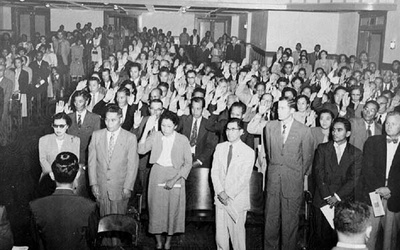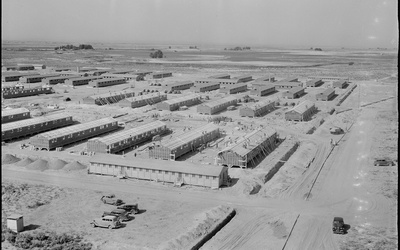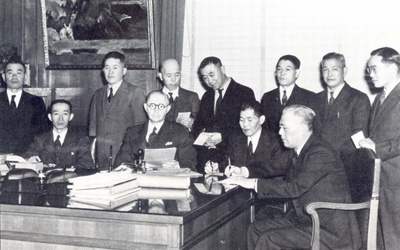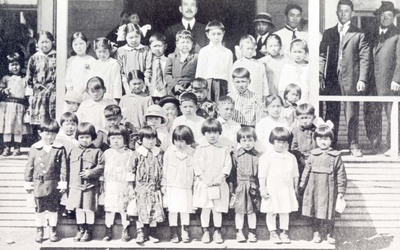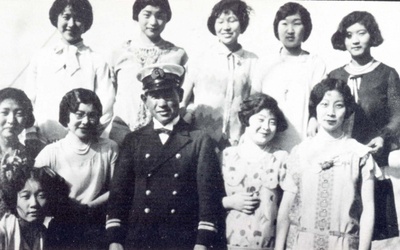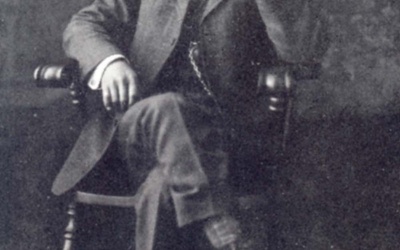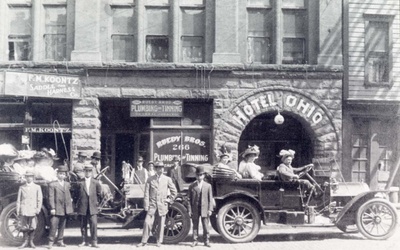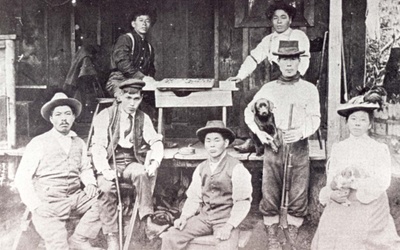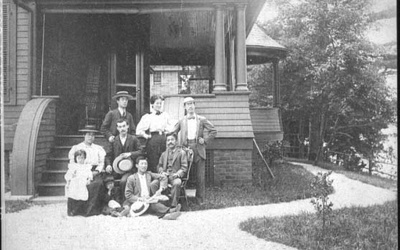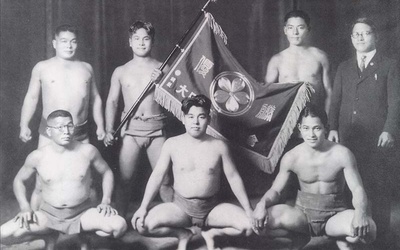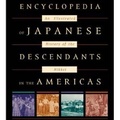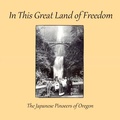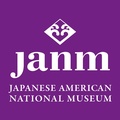
東 栄一郎
(あずま・えいいちろう)
アラン・チャールズ・コース・ターム・チェアの称号(ペンシルベニア大学の優れた歴史研究者を称するために与えられる)を得たペンシルベニア大学の史学及びアジア系アメリカ人研究の助教授。著書として、「Between Two Empires: Race, History, and Transnationalism in Japanese America」 (Oxford University Press, 2005年) 、ユウジ・イチオカ氏との共編「Before Internment: Essays in Prewar Japanese American History」 (Stanford University Press, 2006) がある。また、現在デビッド・ヨー氏と共に「The Oxford Handbook of Asian American History. Between 1992 and 2000」を編集している。過去に全米日系人博物館の学芸員兼研究員を務めた経験があり、カリフォルニア大学ロサンゼルス校からアジア系アメリカ人研究の修士及び博士号を取得。
(2013年 7月 更新)
この執筆者によるストーリー
第8章 新たな抑圧と最後の闘争
2017年12月11日 • 東 栄一郎
彼はかつて私たちの友人だった店主は今神経質に振る舞う商品を売ることを拒否する岩月 静江1戦争が終結に近づくと、オレゴンでは反日運動が再燃した。グレシャムでは、地元の農民や実業家が日本人の排除による経済的利益に刺激を受け、1943年という早い時期に日本人の帰国を阻止する運動を開始した。この運動は、1944年11月にオレゴン反日協会の設立につながった。後に日本人排除連盟と改名されたこの団体は、「現在米国市民権を取得できない人々とその子孫を米国市民権から排除することを目的とした州…
第7章 鉄条網の向こう側での一世の生活
2017年12月5日 • 東 栄一郎
秋の厳しい風それらの精神を貫く運命に翻弄されて生きる人々戦争によって作られた。秋山1抑留者たちの生活環境は原始的だった。ノース・ポートランド集合センターは、以前は太平洋国際家畜博覧会の建物として使われており、人間が居住できる状態にはほとんど整っていなかった。各家族は、薄いベニヤ板で壁が作られた大きなバラックの小さな一室に割り当てられた。各部屋をできるだけ「家庭的」にするために、抑留者たちは棚、テーブル、椅子、食器棚、その他の家具や電化製品を自分たちで作った。カーテンを掛けた…
第6章 真珠湾攻撃:苦悩と混乱の日々
2017年11月27日 • 東 栄一郎
私たちは人生の3分の2をアメリカで過ごし、自分たちは日本人というよりアメリカ人であると感じています。里親を助けるために頼まれたことは何でも喜んでやります。ポートランド一世、1942年1月23日1日本の真珠湾攻撃は、一世の生活に深い影響を与えた。彼らはただちに「敵国人」と分類され、もはや自分や子供たちの安全を確保することができなくなった。「寝ても覚めても、顔色が悪くなるような気がした」とポートランドの商人は語った。「私たちの命だけでなく財産も危険にさらされているのがわかった。…
第5章 排除に対する闘い
2017年11月20日 • 東 栄一郎
一連の排除今は慣れてきた私は毎日農業をしています本多風月1日本人移民は、コミュニティと産業を築きながら、排外主義者の脅威と闘った。第一次世界大戦の排外感情の高まりと相まって、一世農業の急速な成長は、日本人との競争に対する白人の恐怖をかき立てた。フッドリバーの日本人農民は土地所有率が高く、著しい繁栄を見せたため、彼らは排外主義者の組織的攻撃の主たる標的となった。地元の米国在郷軍人会がこの運動の先駆者であった。同会はフッドリバーにおける日本人の土地所有に反対しただけでなく、州法…
第4章 日系移民家族とコミュニティ開発
2017年11月13日 • 東 栄一郎
「日本はこんなに小さな島国だ。こんな所に帰って何になるんだ?親孝行して妻と暮らすならアメリカに来ればいいじゃないか。言葉や習慣の違いが気になるなら、それに適応する方法を学べばいいじゃないか」 1安井益夫オレゴンの日本人農村コミュニティの急速な発展は、家族の出現によって特徴づけられた。初期の日本人移民社会は、主に若い独身者の世界だった。1910 年代には、ますます多くの移民が自分の家族を持つようになり、コミュニティの移住的な性質が変化した。1907 年から 1908 年にかけ…
第3章 日本の農村の発展
2017年11月6日 • 東 栄一郎
アメリカの未開の地私は耕し始めましたこの未開の地。本多風月1 1900 年代には、多くの日本人移民が農業に従事した。当初、一世たちはより良い賃金に惹かれて農場で働いた。1909 年には、オレゴンに住む日本人 3,873 人のうち 4 分の 1 以上が農業労働者だった。ブランケ・カツギ(毛布運び) として知られる彼らは、毛布やその他の日用品を運ぶ季節労働者だった。これらの男性の多くはその後、稼いだお金を投資に回して、一般労働者から小作人、小作地所有者、農場所有者へと昇進した。…
第2章 オレゴンにおける初期の日本人生活
2017年10月30日 • 東 栄一郎
ホップ摘み作業員として働くそれは不可能だ日本への帰国本多風月1 1910 年以前、オレゴンの日系人人口の大半は、粗末な環境で暮らす男性労働者でした。当初、彼らのほとんど、あるいは全員がアメリカに移住したのは定住のためではなく、日本にいる家族のために働いてお金を稼ぐためでした。これらの人々にとって、ポートランドは季節労働を終えると戻ってくる一時的な家でした。次の仕事が見つかるまで、彼らは日系ホテルに泊まり、安いレストランで食事をしました。景気が悪くなると、真っ先に苦しむのはこ…
第1章 — 一世がオレゴンに到着
2017年10月23日 • 東 栄一郎
オレゴンにおける一世開拓者の歴史、1880年~1952年1843年から1860年にかけて、25万人以上の開拓者がオレゴン・トレイルを越えて西へ向かう旅を始めました。1859年にオレゴンはアメリカ合衆国の州となり、1880年代に日本人移民が到着した当時はまだ未開発の森林と未開の農地がある若い州でした。一世と呼ばれる第一世代の日本人移民は、他の開拓者と同様、新しい環境で生き残るために苦労しました。他のほとんどの移民とは異なり、一世はアメリカの帰化法で「市民権を取得できない外国人…
Issei in New York, 1876 – 1941
2014年7月7日 • 東 栄一郎
The first Japanese immigrants to New York were quite different from their West Coast counterparts. Initially, the majority of Issei (first generation Japanese in America) came to New York, not to make quick money and return to Japan, but to engage in U.S.-Japan trade and learn Western ways. Many of these New York Issei came from Tokyo and other large cities, rather than from farming prefectures. Japanese Entrepreneurs The first Japanese in New York were ambitious young businessmen. In 1875, …
Japanese American Sumo in the Continental United States, 1900-1941 - Part 2
2014年3月28日 • 東 栄一郎
Read Part 1 >>Japanese American Sumo in the New Era: From Issei to Nisei The 1924 Immigration Act was an important turning point in the history of Japanese Americans. With the termination of new Japanese immigration and the exodus of many Issei, the population of first generation immigrants decreased rapidly, and the average age of the Nikkei drastically changed. By 1930, the second generation made up more than 50 percent of the entire Japanese American population. While the majority of …

